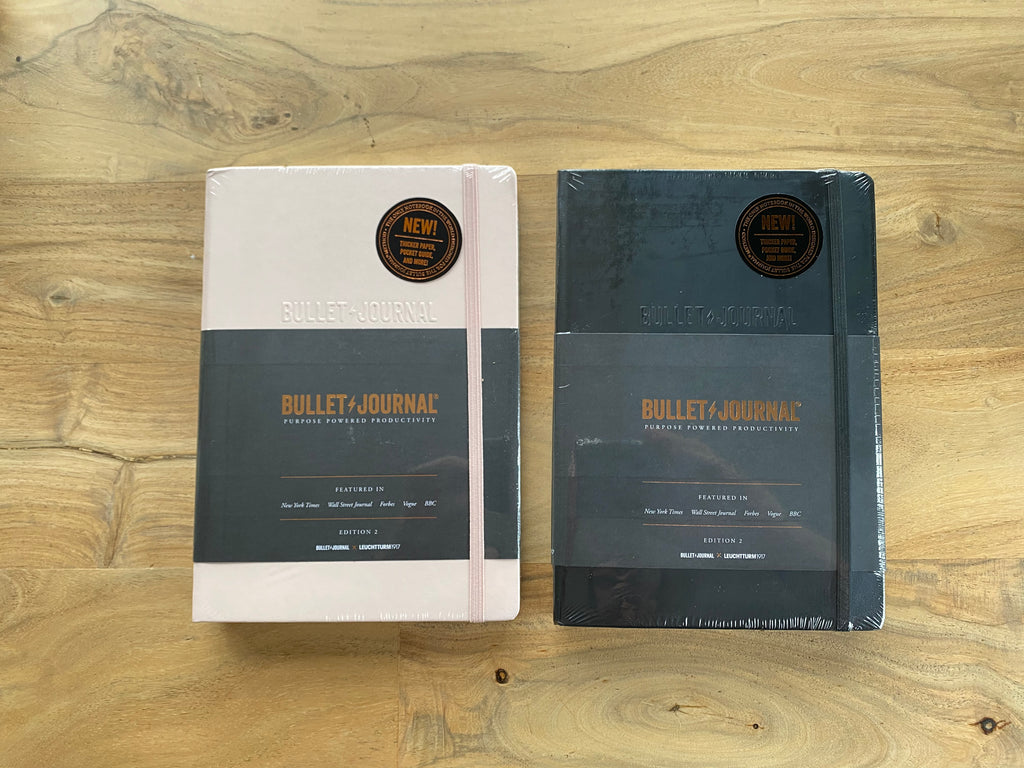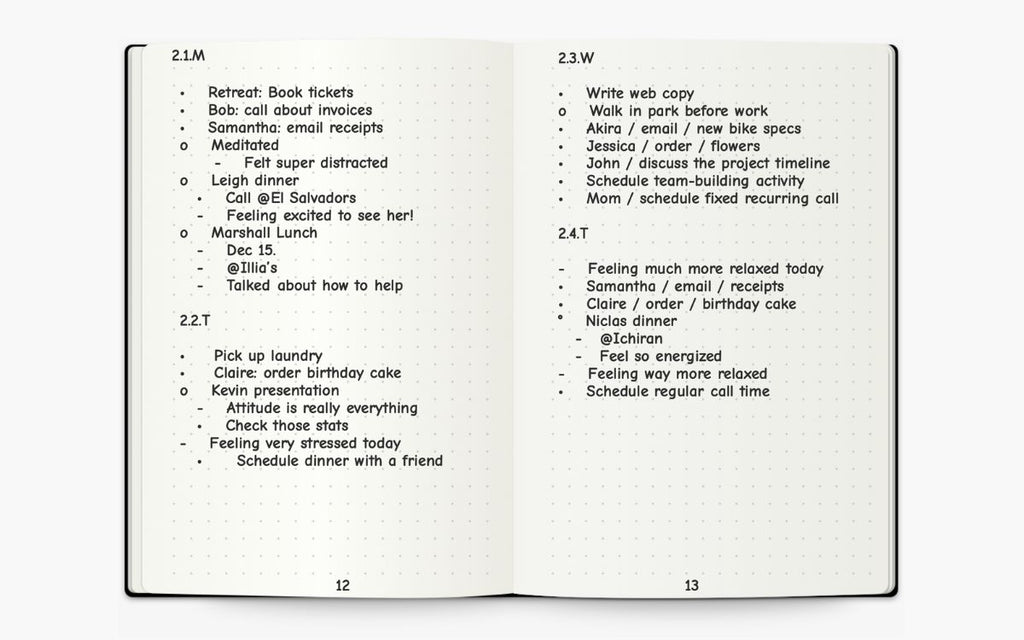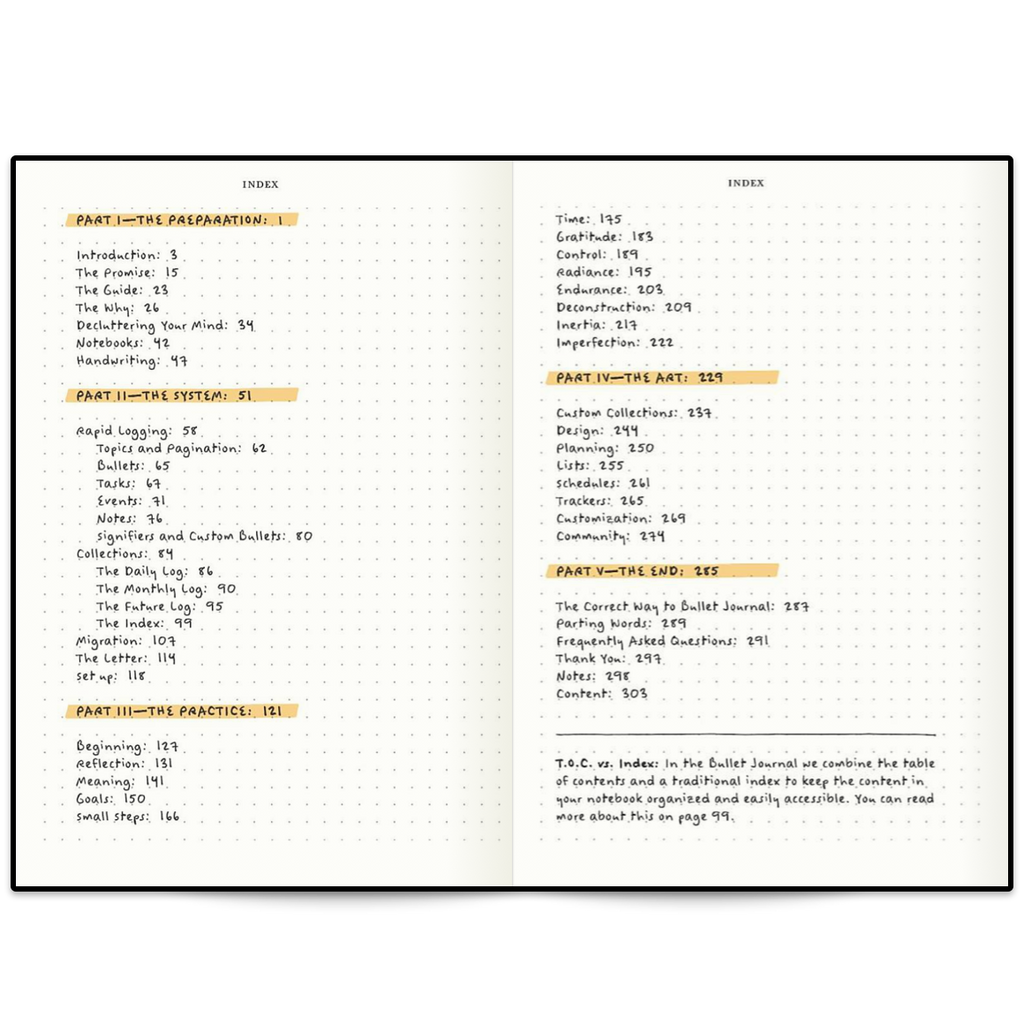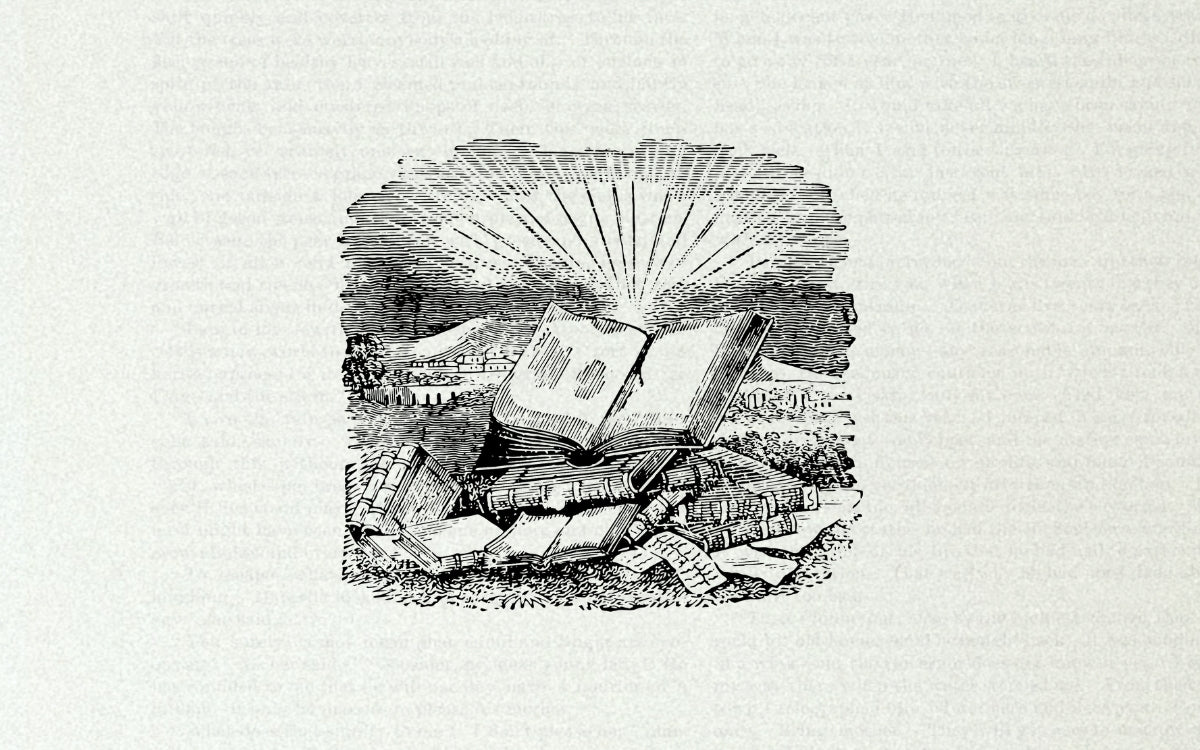People come to the Bullet Journal method for solutions and answers. Often, they also come with pre-conceptions about what the Bullet Journal is like and who it’s for. For some people, the Bullet Journal method feels like this intimidating organization system that’s made for people with an artistic gift or a knack for hyper-productivity.
While you can certainly create an artistic or complex Bullet Journal, you do not need to be an artist or an organization guru to become a Bullet Journalist. All you need is an idea of what you want to accomplish, where you are right now, a notebook and a pen.
A Step by Step Guide to Setting Up Your Bullet Journal
Setting up your first Bullet Journal can be as simple or complex as you would like it to be, but let’s start with simple so we can understand how the method works. This helps us understand why things are the way they are in the Bullet Journal method and how we can best make changes to suit our lifestyle. Here’s a step by step guide to help you get started with the Bullet Journal method:
1. Get a notebook

The Bullet Journal method is primarily an analog organization method. You can use digital tools to help you with Bullet Journaling or skip using a notebook entirely, but using a notebook can give you more flexibility. It seems odd at first. How can a notebook be more functional than a note app? Unlike an app, your Bullet Journal notebook won’t be restricted to a range of inputs. You can determine the UI you work with because you will be making it yourself.
A notebook also takes more manual labor to manage. It forces you to slow down and think about whether this information really matters or if you’re just taking notes for the sake of taking notes. By changing the way we interact with our thoughts, we also change the way we think about them.
If you'd like to start an analog Bullet Journal, you can check out our guide on how to choose a Bullet Journal notebook.
2. Think about your intentions for Bullet Journaling
We tend to conflate our goals with our intentions, but when thinking about what we want to do with the Bullet Journal method, what we really want is to parse back our conceptions and figure out why we think doing a certain task or achieving a goal matters to us. Take time to consider why you want to Bullet Journal.
3. Start with your index page

Open up your Bullet Journal and label the first couple of pages as “Index”. This will be your directory for navigating your Bullet Journal. The Index page in the Bullet Journal method serves as a table of contents for your journal. It's typically located at the beginning of your journal and helps you easily locate specific information and entries.
As you add content and create new sections in your journal, you can assign them a page number and list them in your Index. This way, whenever you need to refer back to a particular topic, collection, or monthly log, you can simply check the Index, find the corresponding page number, and navigate directly to it. The Index ensures that your journal is organized and makes information retrieval a breeze.
4. Create your future log

After putting together your Index pages, label another set of pages to serve as your Future Log. The Future Log in the Bullet Journal method is a section where you can plan and track events, tasks, and deadlines beyond the current month. It provides an overview of upcoming months, allowing you to jot down important dates and commitments.
You can easily set up a Future Log by drawing three horizontal lines across two pages and two vertical lines down each page. This leaves you with six twelve boxes. If you need more space, use four pages with three horizontal lines drawn across all four pages.
The Future Log serves as a reference point for transferring relevant events and tasks to your monthly and daily logs. It enables efficient long-term planning, ensuring you stay prepared and organized for future commitments in both personal and professional areas of your life.
Go back to your Index and add the page numbers of your Future Log to the list.
4. Set up your monthly log

Your next page will serve as your monthly log. You don’t have to start from the beginning of the month. Your monthly log begins with the month you are currently in.
Many Bullet Journalists like to decorate their monthly log with a monthly cover page, but you don’t have to create one. If you want to keep things simple, just write the name of the month at the top of two pages.
On the first page, write down the dates of the month and the day they correspond to. On the second page, write down your monthly task list. These are all the important tasks you expect to be doing this month. Add a task bullet (.) in front of each entry so you can tell it’s a task at a glance. For events, use a circle bullet (o). For notes, use a dash bullet (--).
5. Making your daily log

By now, you can tell the Bullet Journal method starts with a big picture view of time before parsing down tasks and goals to more granular timeframes. The daily log is the smallest unit of your Bullet Journal. This is where today’s tasks, appointments, new ideas, and reminders go.
Write down today’s date on the top of the page and start putting in your entries. Entries in the Bullet Journal method are short and to the point, typically only a sentence long. This is called Rapid Logging and it makes capturing information fast and efficient .
6. Rinse, repeat, and reflect
You’ll be putting together another monthly log at the end of the month. Before you start putting down tasks for the new month, go over your past daily and weekly logs to look for tasks that weren’t finished. Take time to ask yourself whether these tasks are still important. Is it worth your time? If it is, mark the entry with a right arrow (>) and copy that entry into your new monthly log.
If you find that a task isn’t relevant in the near future but will be months from now, flip back to your future log and add the entry there. Mark the original entry with a left arrow (<) to remind yourself that you should flip back to your future log to see when it goes. This process is called Migration and it lets us re-categorize and re-evaluate tasks. You can also do annual migrations and migrations between Bullet Journals.
Bullet Journal ideas for you to try

Collections
Entries that share a theme or purpose can be categorized into a collection. In the Bullet Journal method, a Collection is a “bucket” for tasks and projects that are related to each other. To start a Collection, write the name of your topic at the top of a page. Next, start migrating all related tasks, notes, and events to a relevant Collection.
Cover Pages
Cover pages are decorative pages used to mark the start of a year or month. You’ll often see Bullet Journal photos from Bullet Journalists at the start or end of a month that show off their cover pages. It’s an opportunity to set a theme, write down an inspiring quote, or remember something that currently makes you happy.
Gratitude Log
The Bullet Journal functions as an organization tool, but it’s also meant to foster a deeper awareness of ourselves and the world around us. Gratitude logs are a great way to do this because they give us a chance to stop and think about what we’re grateful for and what truly makes us happy.
To start a gratitude log, simply make a list of dates in a month and write down what made you are grateful for on that day.
Habit Trackers
Building habits is hard, but it can be easier to stick to them when we can see how far we’ve come. Habit trackers are used to help us stay consistent and to keep us accountable for sticking to a new habit every day, week, or month. Habit trackers are often simple, involving checkmarks, graphs, or colored-in pixels.
Mood Trackers
Mood trackers help us keep track of our dominant feeling for the day so that at the end of the month and/or year, we can see at a glance how we felt for most days. It may sound pointless at first, but a mood tracker can tell us that something in our lives may not be working for us and that we need to re-evaluate so that we can be happier.
Finance Log
Some Bullet Journalists also use their Bullet Journals for staying on top of their finances. Most of the time, this is done by keeping a record of income and expenses using a finance log. In a finance log, expenses are marked as either a need or a want, allowing the user to see whether most of their spending is actually essential at the end of each month.





